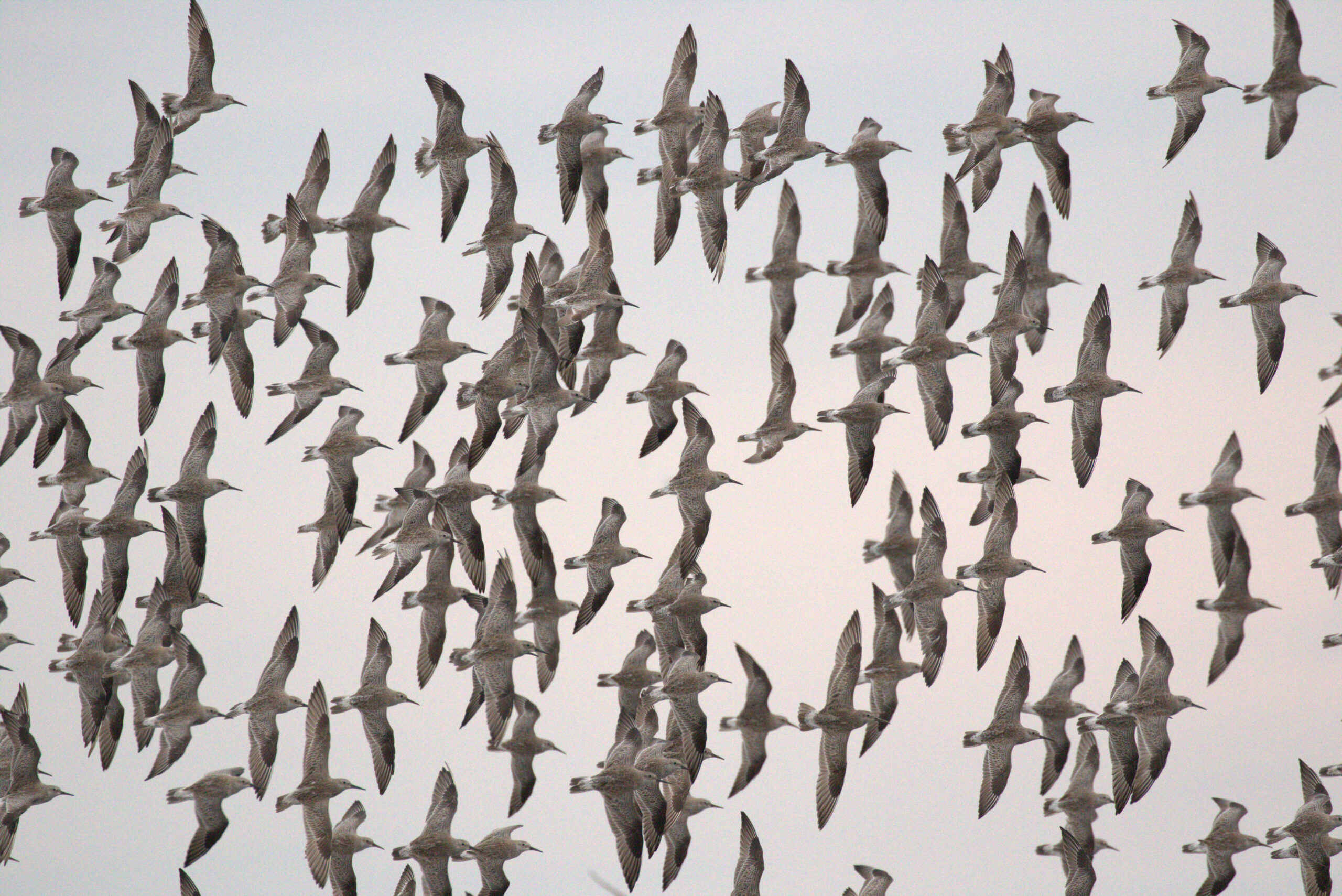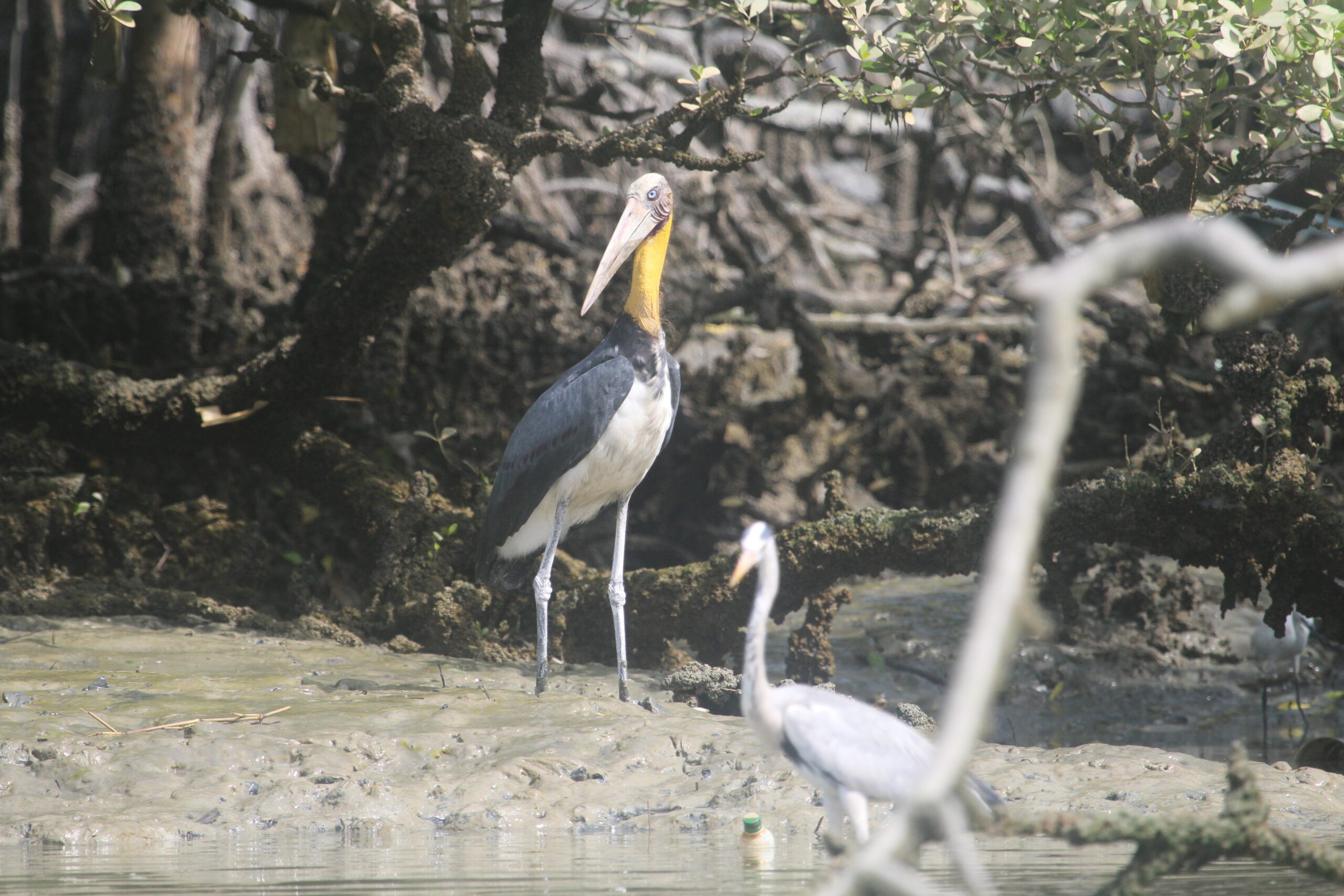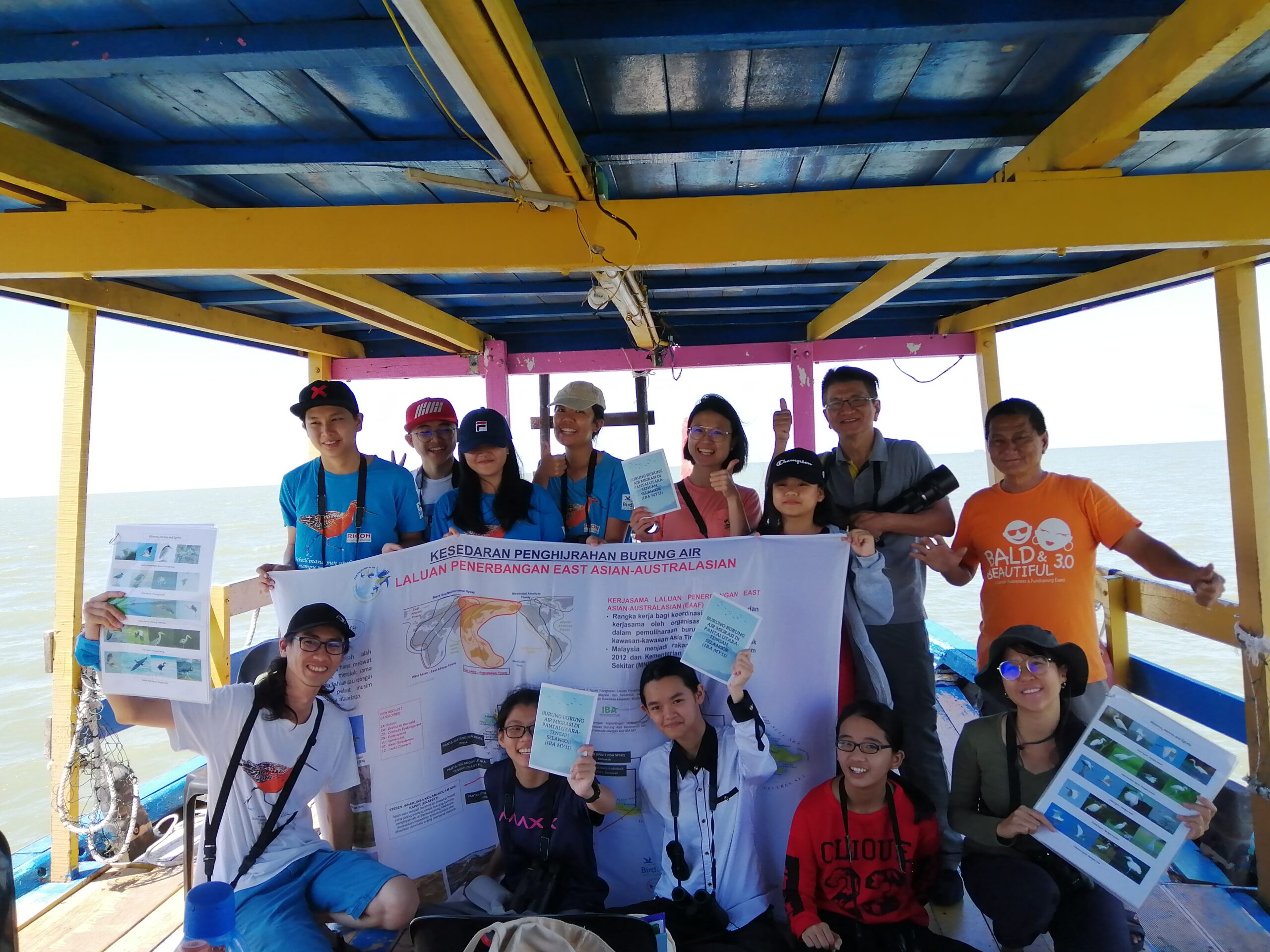Back in 2013, Malaysia joined the East-Asian Australasian Flyway Partnership (EAAFP) with Bako-Buntal Bay from East Malaysia designated as the first Flyway Network Site through a joint effort between the Malaysian Nature Society (MNS), the local government and local communities. The efforts continue in securing more flyway sites for better protection of migratory waterbirds in Malaysia. To date, we have identified seven potential Flyway Network Sites in Malaysia. One of the important sites in Peninsular Malaysia is North-central Selangor Coast (NCSC; IBA MY011). It is a key wintering and staging site for migratory waterbirds, predominantly waders, based on their abundance and diversity.
NCSC stretches about 125km along the coast with mosaic landscapes of intertidal mudflats, sandflats, disjointed mangrove forest patches and mangrove islands. Recent waterbird surveys have recorded 45 waterbird species from seven families wintering in this Important Bird and Biodiversity Area (IBA). Several globally threatened and near-threatened species including Spotted Greenshanks, Far Eastern Curlew, Great Knot, Black-tailed Godwit and Bar-tailed Godwit are known to be wintering here. Kapar Power Station, one of the important high tide roosting sites in NCSC, has recorded up to 30,000 individual winters at the ash pond in 2020, making it the highest count ever recorded in Malaysia. Besides the migratory waterbirds, NCSC is also home to the globally threatened Lesser Adjutant and believe to support one of the largest remaining populations in Malaysia.

Great Knot in Kapar Power Station ©Khoo Swee Seng

Lesser Adjutant in NCSC ©Jacelyn See
As important as the NCSC, it serves as a wintering ground of migratory birds. The habitats within this IBA are severely threatened because it is situated in one of the fastest developing states and is currently identified as one of the only three “IBAs in Danger” in Malaysia. MNS has been conducting monthly waterbird population surveys, high tide roosting sites surveys, and monitoring the coastal environment in NCSC. Since 2013, MNS has been building our relationship with the local communities through Flyway Campaign and is conducting the Asian Waterbird Census annually with the communities to raise awareness on the importance of migratory waterbirds.

Asian Waterbird Census with local students in Pulau Ketam, a mangrove island in NCSC.©MNS
Besides waterbird monitoring and local community engagement, we are also working on different projects tailored to address site-specific threats at different localities within the NCSC. Wipe-out Waste (WOW) Project at Pulau Ketam, a mangrove island in NCSC is a project with a partnership between MNS and Coca-Cola Malaysia since 2015. The main objective of WOW Project is to foster environmental stewardship among the local community through a series of Communication, Education and Public Awareness (CEPA) activities, with achieving a sustainable environment in the future as an ultimate goal.
We are racing against time and MNS will strive to continue strengthening the conservation status of NCSC as an IBA. We intend to further consolidate our working relationship with the local government and local community to advocate for further recognition of NCSC as a Flyway Network Site to the EAAFP for better conservation of the migratory waterbirds in the future.
The Malaysian Nature Society (MNS) is the oldest and largest membership-based environmental NGO in Malaysia. MNS aims to promote the conservation of Malaysia’s natural heritage, advocating and working on the conservation of species, habitats and landscapes with public participation. MNS is the partner of BirdLife International (BirdLife in Malaysia), Wetlands Link International, and National NGO CEPA Focal Point for Ramsar. MNS highlights conservation and research on key habitat and threatened species which translate into local communities’ engagement and landscape-level conservation work with researchers and citizen science activities.
Prepared by Jacelyn See & Chen Foong Ling from Malaysian Nature Society.




